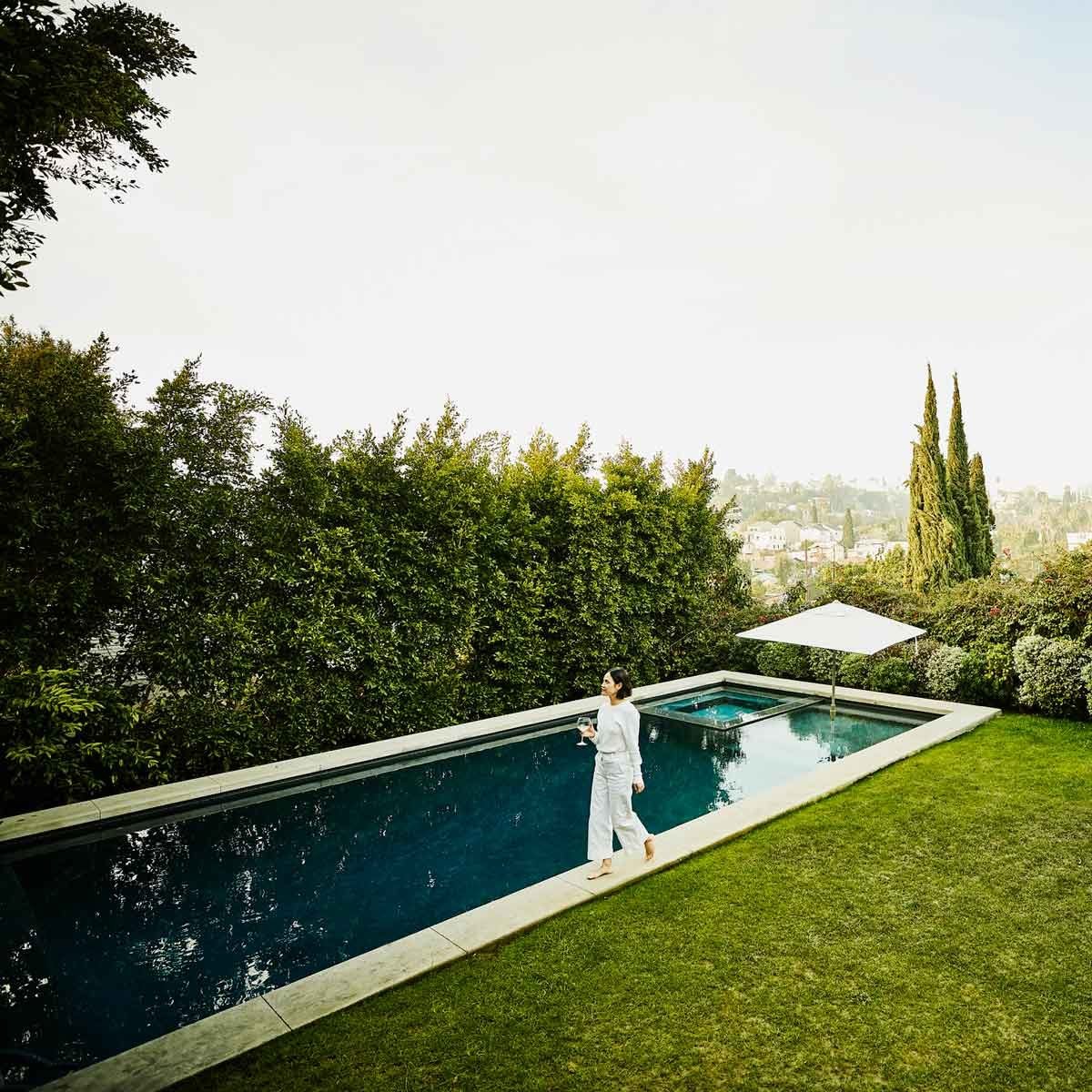If you don't have room for a classic rectangular pool, or your primary reason for an in-ground pool is to swim, a lap pool might be for you.

What to Know About Lap Pools

There are generally two types of people who install lap pools — serious swimmers, or those with narrow or shallow backyards. Whichever category you fall into, it’s best to learn as much as you can about lap pool basics before you decide to jump in.
On This Page
What is a Lap Pool?
A lap pool is long, narrow and rectangular, usually installed in-ground, although they can be built above-ground as well. As the name suggests, a lap pool is designed for swimming laps, so they need to be long.
Lap pools are typically about 40 feet long, but they can reach up to 75 feet. Their width ranges from six to 10 ft. Experts recommend a minimum depth of 3-1/2 feet so swimmers don’t scrape their hands or feet on the bottom. If you do flip turns at the end of each lap like the Olympic swimmers, you need a pool that’s at least four feet deep.
While lap pools can certainly be used for recreation and family playtime, they lack the features of traditional in-ground pools. There’s no shallow end or wide set of steps for kids to splash around. To maximize the swimming space, there may only be narrow ladders to get in and out.
Types of Lap Pools
Unlike traditional pools or even plunge pools, there’s not much design flexibility with a lap pool. It’s a long, narrow rectangle, with width and length the only variables. Most contractors recommend only narrow internal steps, or better yet offset entry steps that do not impede the swimming area.
As with the different types of in-ground pools, a lap pool can be constructed in concrete, vinyl or acrylic sheet. (One caveat with the latter: Because these are prefabricated and must be delivered on a truck, they typically can’t be longer than about 40 feet.)
Other decisions for your lap pool include whether to go with a saltwater or chlorine pool, and whether to spend extra to heat the pool. You might also consider an attached hot tub.
Lastly, if your backyard is too small for a long lap pool, you can consider a much smaller spool pool, which offers resistance current to swim against.
Pros and Cons of Lap Pools
The benefits of a lap pool include:
- Works in a narrow or shallow backyard;
- Great for serious lap swimmers who will use it regularly;
- Can be installed in concrete, vinyl or acrylic sheet;
- Can be customized with heat or a resistance current;
- With landscaping and lighting, can be a beautiful backyard feature.
The downsides of a lap pool include:
- Length may be limited by yard size or materials;
- Less versatile for family fun and relaxing;
- Are uniform depth, with few to no options for steps, sitting areas and other features;
- Little to no cost savings compared to a traditional in-ground pool;
- Will require a gate or fencing like a regular pool, depending on local regulations;
- If your lap pool is heated, figure on higher electric or gas bills.
Lap Pool Installation
Because a lap pool is essentially a long, skinny version of a traditional pool, installation steps are about the same. In-ground lap pools require excavation, pool pumps, filters and skimmers. You’ll probably want a pool deck, either in tile, cement or wood, plus some landscaping to beautify the pool area.
If you’ve got advanced construction skills and access to heavy-duty earth-moving equipment, you could consider installing a DIY lap pool kit. Think long and hard about this one.
Lap Pool Maintenance and Care
There’s little difference in the maintenance and ongoing expense of lap pools compared to traditional in-ground pools. Because lap pools have fewer beauty features such as waterfalls, there may be fewer things that can go wrong with them. If you don’t want to hand vacuum your lap pool, you can buy a “robot” pool cleaner or hire a pool service to maintain the pool.
Lap Pool Cost Considerations
Though they’re narrower than a traditional in-ground pool, the long length of lap pools means installation time and materials are roughly the same as an average in-ground pool. Cost will vary based on whether you go with concrete, vinyl or fiberglass as your pool material. Of these options, vinyl is the cheapest and concrete is the most expensive.




















